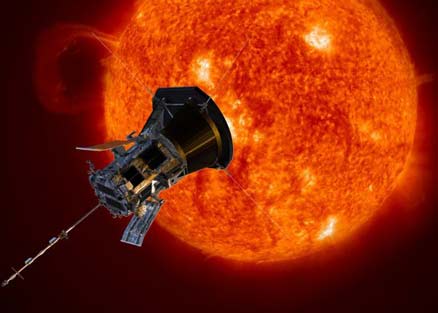The Parker Solar Probe, the spacecraft of the American space agency NASA, has ‘touched’ the Sun for the first time. This probe reached into the sun’s atmosphere (Corona), which has remained untouched till now. NASA scientists announced this spectacular achievement during the meeting of the American Geophysical Union on Wednesday. Parker Solar Probe had passed through Corona during its 8th journey from the Sun in the month of April.
This mission was impossible till now because the temperature of the corona of the sun is 2 million degrees Fahrenheit. This mission of NASA is one of the greatest achievements for the world of science and a milestone for humans. According to the report, the Parker Solar Probe rocketship successfully entered the Sun’s upper atmosphere, called the corona, on April 28. Along with this, this NASA rocket has also taken samples of particles and magnetic fields located on the surface of the red hot star, which till now was considered impossible to accomplish.
Spacecraft stayed for 5 hours in Corona
NASA has said in its report that this NASA spacecraft remained in the corona of the sun for about 5 hours at a point on 28 April 2021. The data shows that the spacecraft had entered the corona of the sun three times. The report of this historic mission of NASA has been published in the scientific paper Physical Review Letters. In it, CFA astrophysicist Anthony Case describes how the Solar Probe itself was an incredible feat of engineering.
How did NASA’s mission become possible?
This historic moment has been achieved with a large collaboration of scientists and engineers, including members of the Center for Astrophysics at Harvard and the Smithsonian (CfA). Who built and monitored an important instrument in the investigation – the Solar Probe Cup. The cup is the instrument that collected particles from the Sun’s atmosphere, helping scientists verify that the spacecraft had indeed managed to touch the corona.

